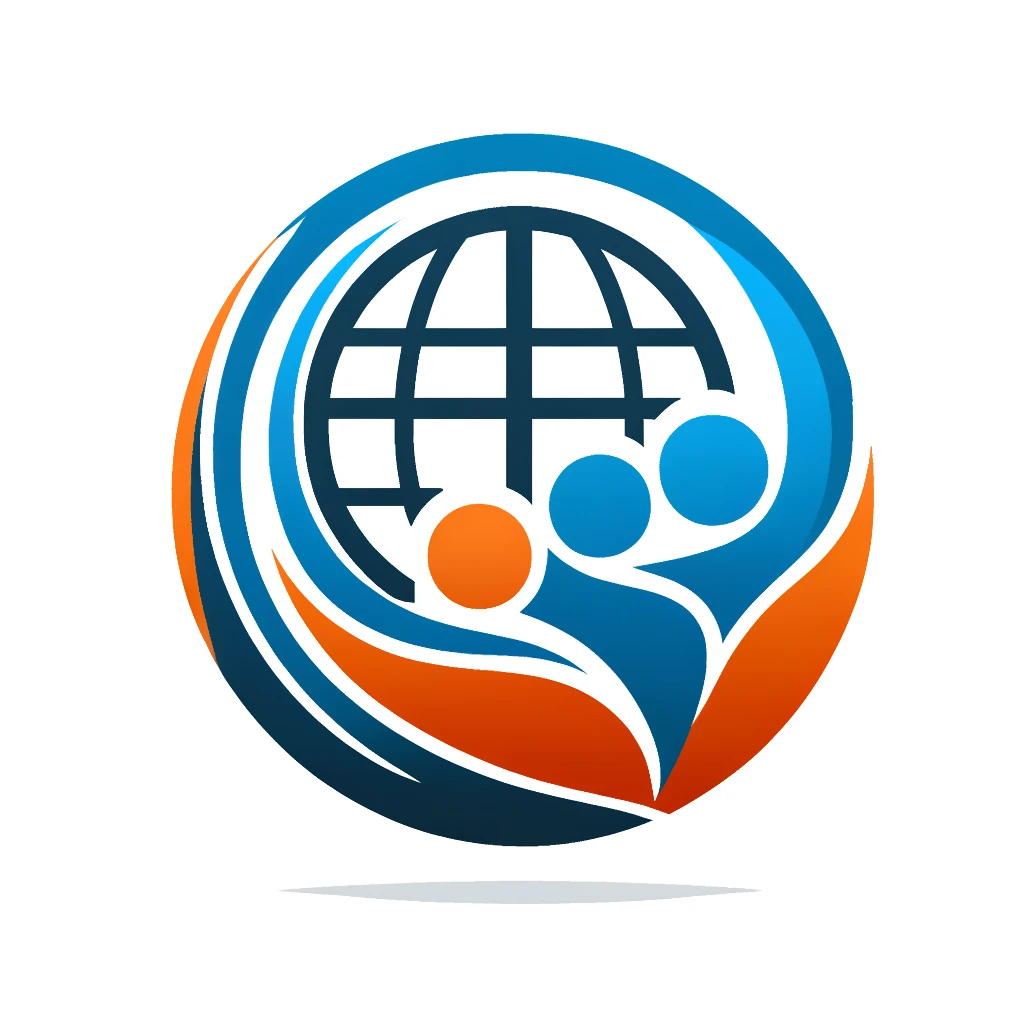Unleashing the Power of Engaged Employees
Engaged employees drive innovation, productivity, and positive work environments. Want to boost your team's morale, productivity, and retention? This listicle delivers eight powerful employee engagement ideas you can implement immediately. Discover how initiatives like recognition programs, professional development, and open communication can transform your workplace into a thriving hub where everyone feels valued and empowered. These actionable strategies are crucial for organizational success in 2025 and beyond.
1. Recognition and Rewards Programs
Fueling employee engagement starts with acknowledging their hard work and dedication. A robust Recognition and Rewards Program is a strategic investment in your people, creating a culture of appreciation where employees feel valued and motivated. It's more than just handing out bonuses; it's about building a system that celebrates contributions both big and small, fostering a sense of belonging and purpose. This approach blends formal and informal recognition systems with meaningful rewards, creating a powerful cycle of positive reinforcement that benefits both the individual and the organization. By acknowledging and rewarding employees, you're not just boosting morale, you're driving performance, innovation, and ultimately, success.

This multifaceted approach can incorporate various features, including peer-to-peer recognition platforms, milestone celebrations (work anniversaries, project completions), performance-based bonuses and incentives, non-monetary recognition (public acknowledgment, certificates of achievement), and personalized rewards tailored to individual preferences. Imagine a system where colleagues can easily applaud each other's efforts, where milestones are celebrated with genuine enthusiasm, and where rewards resonate deeply with the recipient. That's the power of a well-designed Recognition and Rewards Program.
Examples of Successful Implementation:
- Google's 'gThanks': This peer-to-peer platform empowers employees to recognize colleagues, fostering a culture of appreciation from the ground up.
- Salesforce's 'V2MOM': By integrating recognition into its business planning framework, Salesforce demonstrates that valuing employees is core to its overall strategy.
- LinkedIn's 'Bravo!': This program enables employees to recognize peers with small cash rewards, adding a tangible element to appreciation.
- Adobe's 'Applause' program: Employees earn recognition points redeemable for merchandise, offering a personalized reward experience.
Actionable Tips for Implementation:
- Specificity and Timeliness: Make recognition specific to the achievement and deliver it promptly to maximize impact.
- Balance of Rewards: Employ a mix of monetary and non-monetary rewards to cater to diverse preferences and motivations.
- Manager Training: Equip managers with the skills to deliver authentic and impactful recognition.
- Personalization: Offer choices and allow for customization based on individual needs and desires.
- Measurement: Track program effectiveness through engagement surveys and feedback mechanisms to ensure continuous improvement.
When and Why to Use This Approach:
Recognition and Rewards Programs are invaluable for any organization aiming to cultivate a positive and productive work environment. They are especially crucial during times of change, high workload, or when seeking to boost morale and retain top talent. This approach deserves its place on this list because it directly addresses the fundamental human need for appreciation and belonging, making it a cornerstone of any successful employee engagement strategy.
Pros:
- Directly correlates with increased employee satisfaction and retention
- Reinforces desired behaviors and performance
- Creates a positive workplace culture
- Cost-effective relative to replacing disengaged employees
- Builds team camaraderie when implemented properly
Cons:
- Can feel inauthentic if not implemented genuinely
- May create competition instead of collaboration if poorly designed
- Requires consistent application to maintain effectiveness
- Can be difficult to scale fairly across different departments
By thoughtfully designing and implementing a Recognition and Rewards Program, you can transform your workplace into a thriving environment where employees feel valued, motivated, and empowered to achieve their best. Organizations like The Great Place to Work Institute, Workhuman, and authors like Daniel Pink advocate for the power of recognition, and Gallup's employee engagement research underscores its importance. Investing in your people through recognition is an investment in the future success of your organization.
2. Professional Development and Learning Opportunities
Investing in your employees' growth is not just a perk—it's a powerful strategy for building a thriving and future-ready organization. Professional development and learning opportunities are a cornerstone of employee engagement, fostering a culture of continuous improvement, boosting morale, and ultimately driving better business outcomes. This approach demonstrates a commitment to your employees' futures while simultaneously building a more capable, adaptable, and innovative workforce. It's about empowering your team to reach their full potential, and in turn, empowering your organization to reach new heights.

This strategy encompasses a range of initiatives, creating a dynamic learning ecosystem within your organization. Think personalized learning paths tailored to individual aspirations and organizational needs, mentorship and coaching programs that foster valuable connections and knowledge transfer, technical and soft skills training to equip employees with the tools they need to excel, and educational assistance programs like tuition reimbursement that unlock access to higher education. Further enriching the learning journey are opportunities for conference attendance, pursuit of industry certifications, and internal mobility programs that pave the way for career advancement.
Why this deserves its place on the list: One of the leading causes of employee turnover is the perceived lack of growth opportunities. By prioritizing professional development, you directly address this concern, boosting retention and attracting top-tier talent actively seeking career advancement.
Features and Benefits:
- Personalized Learning Paths: Tailored learning experiences maximize engagement and relevance.
- Mentorship & Coaching: Fosters valuable relationships and accelerates knowledge transfer.
- Technical & Soft Skills Training: Equips employees with essential skills for current and future roles.
- Educational Assistance: Empowers employees to pursue further education and expand their expertise.
- Conference Attendance & Certifications: Provides exposure to industry best practices and enhances credibility.
- Internal Mobility & Promotion Opportunities: Creates a clear path for career progression within the organization.
Pros:
- Directly addresses a top reason for employee turnover (lack of growth).
- Builds organizational capability and adaptability.
- Attracts talent seeking career development.
- Increases employee confidence and job performance.
- Creates an internal talent pipeline for succession planning.
Cons:
- Requires significant time and financial investment.
- Risk of developing employees who may leave for other opportunities.
- Can be difficult to measure ROI precisely.
- May create unequal access to opportunities if not carefully managed.
Successful Implementations:
- Amazon's Career Choice: Provides 95% tuition coverage for employees pursuing in-demand fields.
- AT&T's Future Ready: Invested $1 billion in employee reskilling and development programs.
- Microsoft's Learning Platform: Offers over 2,000 internal courses and resources for continuous learning.
- IBM's 'Your Learning': Utilizes AI to personalize learning paths for each employee.
Actionable Tips:
- Align Development with Needs and Aspirations: Ensure alignment between organizational goals and individual career paths.
- Create Individual Development Plans: Collaborate with employees to create personalized learning roadmaps.
- Dedicated Learning Time: Budget time during work hours for learning activities.
- Integrate with Performance Management: Connect learning goals with performance reviews and feedback.
- Celebrate and Showcase Growth: Recognize and reward employees who actively engage in development initiatives.
When and Why to Use This Approach:
This approach is essential for any organization seeking to build a high-performing, engaged, and future-proof workforce. It is particularly valuable during periods of rapid change, industry disruption, or when seeking to enhance internal talent mobility and succession planning.
Popularized By:
- Josh Bersin (learning and development expert)
- LinkedIn Learning (formerly Lynda.com)
- Peter Senge ('The Learning Organization' concept)
- Association for Talent Development (ATD)
3. Employee Wellness Programs
Investing in your employees' well-being is an investment in the future of your organization. Employee Wellness Programs are comprehensive initiatives designed to support the overall well-being of your team – physically, mentally, and financially. Modern wellness programs recognize that employees are whole people, and creating conditions for them to thrive personally translates directly into professional success. These programs go beyond simple perks and demonstrate a genuine commitment to nurturing a healthy and engaged workforce.

These programs encompass a variety of initiatives, including physical health activities like fitness challenges and gym memberships, mental health support such as counseling and stress management resources, and financial wellness education. They also often incorporate policies that promote work-life balance, such as flexible scheduling, as well as ergonomic workspaces and healthy food options. Finally, fostering social connection through community-building activities is a key component of comprehensive wellness programs. Stress is a common factor that affects employee wellbeing and productivity. Incorporating mindfulness exercises and stress reduction techniques into your wellness programs can significantly improve employee mental health and resilience.
The benefits of implementing these programs are numerous. They can lead to reduced absenteeism and healthcare costs, increased productivity and energy levels, and a stronger sense of community among employees. Perhaps most importantly, they demonstrate genuine care for employees as individuals, addressing stress, a major cause of disengagement.
Companies like Johnson & Johnson, Google, Unilever, and Salesforce have seen remarkable success with their employee wellness programs. Johnson & Johnson's comprehensive program has reportedly saved $250 million in healthcare costs. Google's on-site wellness centers and "Google Fit" challenges promote physical well-being, while Unilever's holistic framework addresses physical, mental, emotional, and purposeful well-being. Salesforce's "Thriving Mind" initiative, developed in collaboration with Stanford Medicine, prioritizes mental health support. These examples highlight the diverse ways organizations can prioritize employee wellness.
While the advantages are compelling, it's important to be aware of potential drawbacks. If not implemented respectfully, wellness programs can feel intrusive. They require continuous investment and may not resonate equally with all employees. Measuring the direct impact on business outcomes can also be challenging.
Tips for Success:
- Needs Assessment: Conduct thorough needs assessments to understand your employees' specific wellness needs and tailor your program accordingly.
- Inclusivity: Create inclusive programs that cater to diverse needs and preferences.
- Leadership Participation: Ensure leadership actively and visibly participates in wellness initiatives to demonstrate commitment and encourage engagement.
- Track & Measure: Track both participation rates and relevant outcomes, such as reduced stress levels or improved health metrics, to demonstrate the value of the program.
- Cultural Integration: Integrate wellness into the overall company culture, rather than treating it as a separate "add-on."
Employee Wellness Programs deserve a prominent place in any employee engagement strategy. They represent a shift from simply addressing employee needs to actively investing in their overall well-being. By prioritizing the whole person, these programs cultivate a thriving workforce that is more engaged, productive, and resilient. They foster a positive work environment and build a culture of care, ultimately contributing to the long-term success of the organization.
4. Open Communication and Feedback Channels
Open communication and feedback channels are the lifeblood of a thriving, engaged workforce. This powerful strategy involves creating systematic approaches to ensure transparent, two-way communication flows throughout your organization. It's about fostering an environment where every employee feels empowered to share their thoughts, ideas, and concerns, knowing they will be heard and valued. By opening these lines of communication, you build trust, ignite innovation, and cultivate a culture of psychological safety where everyone can contribute their best.
How it Works:
Open communication isn't just about talking at your employees; it's about actively listening to them. It involves implementing a variety of channels and mechanisms that facilitate both top-down and bottom-up communication. This could include:
- Regular town halls and executive Q&A sessions: These provide opportunities for employees to hear directly from leadership and ask pressing questions.
- Anonymous feedback platforms and suggestion systems: These tools empower employees to voice concerns or share innovative ideas without fear of retribution.
- Pulse surveys and engagement measurement tools: These provide regular snapshots of employee sentiment, enabling you to track trends and identify potential issues early on.
- Open-door policies and skip-level meetings: These foster a culture of accessibility and encourage direct dialogue between employees and leaders at all levels.
- Cross-functional communication channels: These facilitate collaboration and knowledge sharing across different departments, breaking down silos and fostering a sense of community.
- Transparent sharing of company information and performance: This builds trust and allows employees to feel invested in the organization's success.
Examples of Success:
Several organizations have successfully implemented open communication strategies, reaping significant benefits:
- Buffer: Known for its radical transparency, Buffer publicly shares its salary formulas, financials, and even internal email communications. This level of openness fosters trust and empowers employees.
- Bridgewater Associates: Their "Dot Collector" app allows for real-time feedback, promoting open dialogue and continuous improvement.
- HubSpot: Their internal "Wiki" serves as a central knowledge-sharing platform, fostering collaboration and transparency.
- Zappos: The company encourages direct access to the CEO via open communication channels, ensuring that employee voices are heard at the highest level.
Actionable Tips for Implementation:
- Close the feedback loop: Don't just collect feedback; act on it! Communicate the actions taken based on employee input.
- Train managers in active listening and constructive feedback: Equipping managers with these skills is crucial for creating a culture of open communication.
- Create multiple channels for different communication preferences: Recognize that different employees prefer different communication methods. Offer a variety of channels to cater to these preferences.
- Balance transparency with appropriate confidentiality: While transparency is essential, it's important to maintain appropriate confidentiality regarding sensitive information.
- Regularly audit communication effectiveness through employee input: Continuously seek feedback on your communication strategies to ensure they are meeting employee needs.
Why This Deserves a Place on the List:
Open communication and feedback channels are not just a nice-to-have; they are a fundamental building block of employee engagement. By fostering transparency and creating a culture where every voice matters, you empower employees to become active participants in the organization's success.
Pros:
- Builds trust between leadership and employees
- Identifies engagement issues before they become critical
- Surfaces innovative ideas from all levels of the organization
- Reduces rumors and misinformation
- Creates a culture of psychological safety and honesty
Cons:
- Requires commitment to act on feedback received
- Can create unrealistic expectations if not managed properly
- Needs consistent execution to maintain credibility
- May reveal uncomfortable truths leaders must address
Popularized By:
Kim Scott (author of 'Radical Candor'), Amy Edmondson (psychological safety research), Culture Amp engagement platform, Glassdoor's company reviews and transparency model.
This approach is particularly valuable when:
- Building trust and rapport: Open communication is essential for establishing strong relationships between leadership and employees.
- Driving innovation: By encouraging feedback and ideas from all levels, you tap into a wealth of untapped potential.
- Improving organizational performance: Engaged employees are more productive and committed to the organization's success.
- Navigating change: Transparent communication is crucial during times of change, helping employees understand the rationale behind decisions and feel more secure.
By embracing open communication and feedback, you create a dynamic and engaged workforce that is ready to take on any challenge. This is not just about improving employee satisfaction; it's about building a stronger, more resilient, and ultimately, more successful organization.
5. Purpose-Driven Culture and Values Alignment
In today's world, employees crave more than just a paycheck. They seek meaning, connection, and a sense of belonging in their work. A purpose-driven culture, built on strong values alignment, offers precisely that. This strategic approach connects employees to the organization's core purpose – its reason for being beyond profit – and ensures that personal values resonate with the company's mission. This fosters a deep emotional connection, driving intrinsic motivation and a genuine desire to contribute to something larger than oneself.
How it Works:
A purpose-driven culture isn't just a catchy slogan; it's a fundamental shift in how an organization operates. It starts with clearly articulating the mission, vision, and values that guide every decision. These values then become integrated into all aspects of the employee experience, from hiring and promotion criteria to performance reviews and recognition programs. Purpose-driven organizations actively seek out social impact initiatives and giving programs, connecting employees' daily work to a tangible positive impact on the world. Regular storytelling and open communication reinforce this connection, ensuring that the organization's purpose remains front and center.
Examples of Success:
- Patagonia: Their commitment to environmental activism is deeply woven into their business model, inspiring employees and customers alike.
- TOMS Shoes: The one-for-one giving model directly connects daily work to a tangible impact, fostering a strong sense of purpose among employees.
- Microsoft: Under Satya Nadella's leadership, the company embraced a growth mindset, transforming its culture and driving innovation.
- Unilever: The Sustainable Living Plan connects purpose to product development, demonstrating a commitment to both business success and positive social impact.
Actionable Tips for Implementation:
- Involve Employees: Empower your team to participate in defining and evolving organizational values, fostering a sense of ownership and authenticity.
- Storytelling: Create regular touchpoints to the organization's purpose through compelling stories that showcase its impact.
- Measure Alignment: Integrate values alignment into performance reviews, demonstrating that these principles are truly valued.
- Volunteer Opportunities: Give employees direct exposure to the organization's impact through volunteer opportunities, strengthening their connection to the cause.
- Leadership Alignment: Ensure that leadership decisions visibly align with stated values, demonstrating true commitment from the top down.
When and Why to Use This Approach:
This approach is particularly effective in attracting and retaining Millennial and Gen Z employees who prioritize purpose and meaning in their work. It also helps navigate challenging business periods by providing a sense of stability and shared purpose. A purpose-driven culture fosters discretionary effort, fuels intrinsic motivation, and creates a powerful sense of community.
Pros:
- Creates a deeper emotional connection than transactional benefits.
- Particularly effective with Millennial and Gen Z employees.
- Drives discretionary effort and intrinsic motivation.
- Helps attract candidates aligned with organizational values.
- Provides meaning during challenging business periods.
Cons:
- Requires authentic commitment, not just words on a wall.
- Can create disillusionment if actions contradict stated values.
- May be difficult to align across a diverse global workforce.
- Takes time to develop and cannot be implemented quickly.
Popularized By:
- Simon Sinek ("Start With Why")
- B Corporation certification movement
- Jim Collins and Jerry Porras ("Built to Last")
- Conscious Capitalism movement (John Mackey)
This item deserves its place on the list because it addresses a fundamental shift in the employee-employer relationship. It moves beyond transactional exchanges and taps into the deep human need for purpose and meaning. By aligning personal values with organizational purpose, companies can unlock unprecedented levels of engagement, loyalty, and performance. It's not just about doing good; it's about doing well by doing good, creating a win-win for both the organization and its people.
6. Empowerment and Autonomy Initiatives
Unleash the hidden potential within your workforce with Empowerment and Autonomy Initiatives. This dynamic approach centers around providing employees with genuine control over their work, fostering a sense of ownership and intrinsic motivation that traditional top-down management simply can't replicate. By granting employees decision-making authority, flexible work arrangements, and opportunities to lead self-directed projects, you're not just improving job satisfaction – you're cultivating a breeding ground for innovation and accelerated growth. This approach acknowledges that employees are not just cogs in a machine; they are capable individuals with valuable insights and the desire to contribute meaningfully.

Empowerment and autonomy manifest in various forms, including pushing decision-making down to the most appropriate levels, embracing flexible work arrangements (spanning location, hours, and methods), fostering self-directed teams with minimal managerial oversight, dedicating "innovation time" for creative pursuits, implementing results-only work environments (ROWE), and incorporating participatory goal-setting processes. These strategies tap into fundamental psychological needs for autonomy and competence, fueling a more engaged, productive, and satisfied workforce.
Examples of Success: Consider Google's renowned "20% time" policy, which birthed groundbreaking innovations like Gmail and Google News. Semco Partners, under Ricardo Semler's leadership, revolutionized management with its radical democratic approach. Netflix's "No Rules Rules" culture champions responsible freedom, while Best Buy's implementation of ROWE demonstrates the power of focusing on outcomes rather than rigid processes.
Why This Approach Deserves Its Place: In today's rapidly evolving business landscape, organizations need adaptable, proactive employees who can think critically and solve problems creatively. Empowerment and autonomy initiatives directly address this need by fostering a culture of ownership, innovation, and rapid response.
Pros:
- Increased Intrinsic Motivation and Ownership: Employees become invested in the success of their projects and the organization as a whole.
- Faster Decision-Making and Organizational Responsiveness: Decentralized decision-making empowers those closest to the work to act swiftly.
- Leadership Development: Provides opportunities for employees at all levels to hone their leadership skills.
- Accommodation for Diverse Working Styles and Life Circumstances: Flexibility allows individuals to work in ways that maximize their productivity and well-being.
- Innovation and Creative Solutions: Empowered employees are more likely to generate novel ideas and approaches.
Cons:
- Requires Clear Boundaries and Expectations: Autonomy thrives within a framework of defined goals and responsibilities.
- Potential Coordination Challenges: Increased autonomy requires robust communication and collaboration mechanisms.
- Not All Employees Thrive with High Autonomy: Some individuals prefer more structured environments and guidance.
- Managerial Mindset Shift: Requires managers to transition from a controlling role to a coaching and supporting one.
Actionable Tips for Implementation:
- Start with Clear Expectations: Define desired outcomes while providing flexibility in methods.
- Cultivate Psychological Safety: Create an environment where employees feel secure taking initiative and experimenting.
- Train Managers as Coaches: Equip managers with the skills to mentor and empower their teams.
- Implement Graduated Autonomy: Increase autonomy levels based on demonstrated capabilities and responsibility.
- Celebrate Entrepreneurial Thinking and Smart Risk-Taking: Foster a culture that rewards innovation and learning from both successes and failures.
When and Why to Use This Approach: This approach is particularly effective when you want to:
- Boost Innovation and Creativity: Empower employees to generate new ideas and solutions.
- Improve Employee Engagement and Retention: Foster a sense of purpose and ownership.
- Increase Organizational Agility and Responsiveness: Enable faster decision-making and adaptation to change.
- Develop Future Leaders: Cultivate leadership capabilities throughout the organization.
Empowerment and autonomy initiatives, championed by thought leaders like Ricardo Semler, Daniel Pink, Cali Ressler, Jody Thompson, and Reed Hastings, represent a paradigm shift in management. By embracing this approach, you can unlock the full potential of your workforce and create a more engaged, innovative, and successful organization.
7. Team Building and Social Connection
Human connection is the lifeblood of any thriving organization. Team building and social connection initiatives are not just about fun and games; they are deliberate strategies to cultivate meaningful relationships among colleagues and foster a strong sense of belonging. This approach recognizes a fundamental truth about employee engagement: employees who feel connected to their colleagues are significantly more likely to be engaged, productive, and loyal. This isn't just a nice-to-have; it's a critical driver of individual and organizational success.
Why This Matters: Think about it – when you have a "best friend at work," you're more excited to collaborate, more comfortable sharing ideas, and more resilient in the face of challenges. This positive dynamic ripples throughout the team, improving communication, boosting morale, and ultimately driving better business outcomes. Gallup's Q12 engagement survey, which highlights the importance of having a best friend at work, underscores the power of this connection.
How It Works: Building a socially connected workplace involves a multifaceted approach:
- Structured Activities & Retreats: From problem-solving challenges to offsite adventures, structured activities can create shared experiences and strengthen bonds.
- Interest-Based Employee Resource Groups: These groups offer a platform for employees to connect over shared interests, hobbies, or backgrounds, fostering a sense of community and inclusion. Airbnb's diverse employee resource groups are a great example of this.
- Collaborative Workspace Design: Both physical and virtual workspaces should be designed to encourage interaction and collaboration. Pixar's famed "collision spaces," intentionally designed to facilitate spontaneous encounters, illustrate this principle beautifully.
- Celebrating Milestones: Recognizing personal and professional achievements, both big and small, reinforces the value of each individual and strengthens team bonds.
- Cross-Functional Projects & Rotations: Breaking down silos and fostering collaboration across departments exposes employees to new perspectives and builds relationships across the organization.
- Social Events & Shared Experiences: From casual coffee breaks to team lunches and company-wide celebrations, these events provide opportunities for informal connection and relationship building.
Actionable Tips for Implementation:
- Balance Structure with Organic Growth: While structured activities are important, don't overlook the power of organic relationship building. Encourage informal gatherings, coffee chats, and team lunches. Create both synchronous and asynchronous connection opportunities for remote and hybrid teams.
- Purposeful Team Building: Avoid "mandatory fun." Ensure that team-building activities have a clear purpose and contribute to team goals or development.
- Leadership Role Modeling: Train leaders to model vulnerability and authentic connection. Research by Brené Brown emphasizes the importance of vulnerability in building trust and connection.
- Inclusion and Respect: Recognize that introverts may need different approaches to social connection. Offer a variety of activities and respect individual preferences.
- Cultural Sensitivity: For global teams, be mindful of cultural differences in communication styles and social norms.
Pros:
- Creates psychological safety, essential for effective collaboration (as highlighted by Amy Edmondson's research).
- Reduces isolation, particularly crucial for remote workers.
- Improves communication and decreases conflicts.
- Makes coming to work more enjoyable and meaningful.
- Builds resilience during organizational challenges, mirroring the principles in Patrick Lencioni's "The Five Dysfunctions of a Team."
Cons:
- Requires a balance between inclusion and respecting introverts' preferences.
- Can feel forced if not implemented authentically.
- Requires ongoing investment and refreshing.
- Demands cross-cultural considerations for global teams.
Examples of Success: Zappos is renowned for its culture-focused onboarding program, emphasizing cross-departmental relationship building from day one. Atlassian's "ShipIt Days," where teams collaborate on innovative projects, perfectly combine teamwork with creative problem-solving.
Team building and social connection deserve a prominent place in any employee engagement strategy. By fostering genuine connections among colleagues, organizations can create a more positive, productive, and resilient workforce. Investing in these initiatives is an investment in the overall health and success of your organization.
8. Employee Voice and Involvement in Decision Making
Unlocking the full potential of your organization starts with tapping into the collective wisdom of your workforce. Employee voice and involvement in decision-making is more than just a trendy HR buzzword; it's a powerful strategy for driving engagement, innovation, and organizational success. This approach recognizes that employees at all levels, especially those on the front lines, possess valuable insights and perspectives that can significantly improve decision quality and implementation effectiveness. By creating a culture where their voices are heard and valued, you foster a sense of ownership and shared responsibility that propels your organization forward.
How it Works:
Employee voice and involvement in decision-making involves establishing systematic processes for incorporating employee perspectives into organizational choices, ranging from high-level strategic planning to daily operational decisions. This can manifest in various forms:
- Employee advisory boards and representative committees: These groups provide a formal channel for employees to voice their concerns and contribute ideas directly to leadership.
- Participatory strategic planning processes: Involving employees in strategic discussions empowers them to shape the future direction of the organization.
- Idea management systems for innovation: Platforms and processes for collecting, evaluating, and implementing employee suggestions can be a wellspring of fresh perspectives and creative solutions.
- Skip-level meetings and listening tours: These informal interactions allow leaders to connect directly with employees, gather feedback, and build rapport.
- Democratic process elements (voting, consensus building): Giving employees a say in decisions that directly affect them reinforces their sense of agency and ownership.
- Co-creation of policies affecting employees: When employees are involved in crafting the policies that govern their work, they are more likely to understand, support, and adhere to them.
Successful Implementations:
- W.L. Gore & Associates: Known for its lattice organizational structure, W.L. Gore eschews traditional hierarchies, empowering employees to self-manage and make decisions collaboratively.
- Southwest Airlines: Their Culture Committee acts as a vital link between employees and leadership, ensuring that employee voices are heard and considered.
- Toyota: The renowned "andon cord" system empowers any employee to stop the production line if they identify a quality issue, demonstrating a deep commitment to employee involvement.
- Whole Foods Market: Decentralized decision-making at the team level empowers employees to manage their own work areas and contribute to store-level decisions.
Actionable Tips for Implementation:
- Define Decision Boundaries: Be transparent about the level of influence employees will have (input, consultation, or final decision).
- Structured Processes: Establish clear processes for gathering, evaluating, and incorporating employee input.
- Training & Development: Invest in training for both leaders and employees on effective collaborative decision-making.
- Start Small and Scale: Begin with smaller, less critical decisions to build confidence and experience, then gradually expand involvement.
- Show Impact: Demonstrate the value of employee input by highlighting specific examples of how it has influenced outcomes.
Why This Deserves Its Place on the List:
In today's complex and rapidly changing business environment, organizations need to leverage every available resource to succeed. Employee voice and involvement in decision-making is not just a nice-to-have; it's a critical driver of engagement, innovation, and competitive advantage. By empowering employees to contribute their unique talents and perspectives, you create a more agile, responsive, and resilient organization.
Pros:
- Improves decision quality with diverse perspectives
- Increases buy-in and implementation effectiveness
- Develops leadership skills throughout the organization
- Creates a culture of ownership and accountability
- Identifies potential issues before implementation
Cons:
- Can slow decision-making processes
- May create disappointment if input isn't visibly used
- Requires skill development for effective participation
- Not all decisions are appropriate for broad involvement
Popularized By:
- Ricardo Semler (democratic workplace advocate)
- Sociocracy/Holacracy governance models
- Robert Greenleaf (servant leadership philosophy)
- Peter Block (stewardship and empowerment concepts)
This approach is particularly valuable when:
- Facing complex challenges requiring diverse perspectives
- Seeking to increase employee buy-in for major changes
- Aiming to foster a culture of innovation and continuous improvement
- Building a more engaged and empowered workforce
By embracing employee voice and involvement, you are investing in a future where everyone contributes, everyone benefits, and your organization thrives.
Employee Engagement Ideas: 8-Strategy Comparison
| Strategy | 🔄 Complexity | ⚡ Resources | 📊 Outcomes | Ideal Use Cases | ⭐ Key Advantages |
|---|---|---|---|---|---|
| Recognition and Rewards Programs | Moderate – needs consistent, genuine design | Medium – balanced cost vs. impact | Increases satisfaction, retention, and team morale | Organizations emphasizing positive culture and peer recognition | Enhances motivation and reinforces desired behaviors |
| Professional Development and Learning Opportunities | High – requires structured planning and budgeting | High – significant time and financial investment | Builds skills, reduces turnover, and creates internal talent pipelines | Growth-focused environments committed to long-term capability development | Boosts engagement and attracts talent |
| Employee Wellness Programs | Moderate to High – ongoing effort and maintenance | High – investment in health initiatives and facilities | Reduces absenteeism, improves productivity, and enhances overall wellbeing | Companies focusing on holistic employee care and reducing healthcare costs | Improves well-being while building community |
| Open Communication and Feedback Channels | Moderate – needs consistent and transparent processes | Low to Medium – relies on tools and culture | Builds trust, enhances transparency, and improves decision-making | Organizations valuing openness and proactive engagement | Drives collaboration and surfaces innovative ideas |
| Purpose-Driven Culture and Values Alignment | High – requires authentic, deep integration | Moderate – focused on cultural initiatives | Increases emotional connection and intrinsic motivation | Businesses emphasizing mission, social impact, and values alignment | Cultivates a deep sense of meaning and commitment |
| Empowerment and Autonomy Initiatives | Moderate – clear guidelines and gradual rollout | Low to Medium – cultural shift with management training | Accelerates decision-making, fosters innovation, and enhances ownership | Companies that value creative freedom and decentralized decision-making | Empowers employees and boosts responsiveness |
| Team Building and Social Connection | Low to Moderate – planned but flexible activities | Low to Medium – event-based and interpersonal investments | Improves collaboration, communication, and overall engagement | Workplaces aiming to strengthen interpersonal bonds and community | Builds cohesion and makes work more enjoyable |
| Employee Voice and Involvement in Decision Making | High – systematic processes needed for broad involvement | Medium – requires time and structured frameworks | Enhances decision quality, promotes ownership, and increases accountability | Organizations adopting democratic approaches and inclusive decision making | Fosters diverse perspectives and collective accountability |
Building a Future of Engaged Employees
From recognition programs that celebrate achievements to fostering a purpose-driven culture that resonates with individual values, the eight strategies discussed in this article provide a powerful toolkit for cultivating a thriving and engaged workforce. The key takeaway is this: investing in your employees is an investment in your organization's future. Prioritizing open communication, providing opportunities for growth, and empowering employees to contribute their unique talents are not just HR buzzwords – they are the cornerstones of a successful and sustainable organization. By mastering these concepts and weaving them into the fabric of your workplace, you unlock a powerful cycle of increased productivity, innovation, and positive impact. This translates to not only a happier and healthier workforce but also a stronger bottom line and a more vibrant organizational culture.
Remember, fostering employee engagement is an ongoing journey of growth and adaptation. It requires consistent effort, a willingness to listen, and a commitment to creating an environment where every employee feels valued, heard, and empowered to reach their full potential. Embark on this transformative journey today and witness the remarkable impact it has on your organization.
Ready to deepen your understanding of employee engagement and transform your workplace? The Global Human Resource Institute offers a wealth of resources, including certification programs and a vibrant community, designed to equip HR professionals with the knowledge and skills to build a future of engaged employees. Visit Global Human Resource Institute to explore their offerings and elevate your employee engagement strategy.




0 Comments